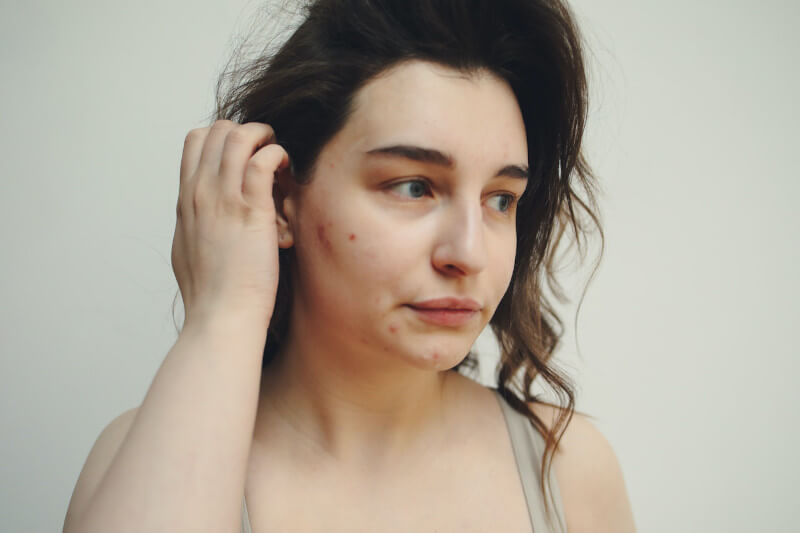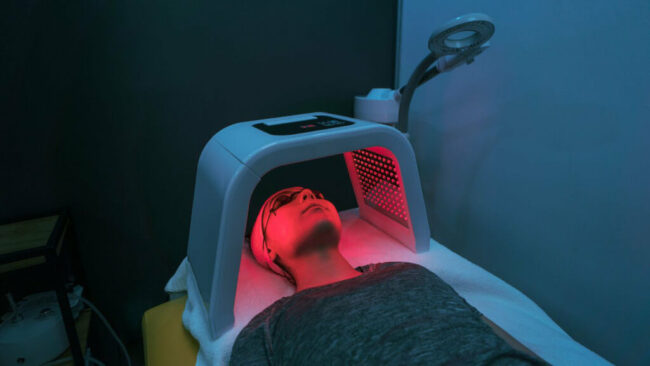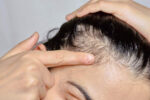How Exactly Does It Work?
The body is subjected to low-wavelength red light during RLT treatment. The RLT treatment is a streamlined process that involves exposing the body to red light with a low wavelength. The process is also known by the name low-level laser light therapy; however, RLT is likely the more popular term.
This red light is naturally occurring and can travel deep beneath the skin, allowing it to be absorbed by the cells and put to use. According to research, the mitochondria that are found in the cells of the skin can take in light particles. This may assist the cells in producing more adenosine triphosphate, which serves as the energy supply for every cell in the body.
The possible positive benefits of RLT have been attributed by many specialists to this particular function. The cells may be capable of reacting to damage more effectively and reinvigorating themselves if they have access to this additional energy.
Even though there has been some preliminary investigation into RLT, there is currently no substantiation that can be taken as proof that it is an effective treatment. The treatment has been shown to have potential in several studies, but there needs to be further investigation into its possible applications in humans via more comprehensive clinical research. Despite this, there are potentially quite a few advantages to utilizing RLT, all of which will be discussed in greater detail in the following paragraphs.
Enhancing the Health of the Skin
The vast majority of individuals are intrigued by the prospect of RLT as a method that might enhance skin health. Numerous studies have been conducted as a result of the possibility that RLT can be used as a method to rejuvenate the skin. According to the findings of a review published in the journal Seminars in Cutaneous Medicine and Surgery, RLT may assist in the rejuvenation of the skin by the following mechanisms:
- Boosting the formation of collagen inside the epidermis, which is responsible for the elastic modulus of the skin.
- Increasing the number of fibroblasts, which assists in the creation of collagen and other skin natural fiber.
- Promoting increased circulation between the blood and the cells of the tissue.
- Safeguarding the integrity of the cells.
- Increasing levels of mRNA inside the mitochondria assist stimulation of cell activity and improve facial texture.
- Smoothing out of the wrinkles.
- Minimizing the appearance of wrinkles
A study involving 136 participants, looked into the efficacy of light therapy in treating various skin conditions. According to the findings of the scientists, these light treatments could:
- Reinvigorate the skin
- Enhance not only the appearance but also the sensation of the skin.
It is essential to keep in mind that the majority of the findings concerning RLT originate from experiments conducted in test tubes, which investigate the purpose of RLT. As can be seen in the medical trial that was presented earlier. A large number of human studies utilized extremely limited specimen sizes. These findings demonstrate that the treatment has great promise, but they do not provide evidence that proves it will be successful in every instance.
It Can Assist In The Treatment of Acne

There is some evidence to suggest that RLT is an efficient therapy for acne vulgaris. Different kinds of light therapy are prospective substitutes that can be used to treat acne vulgaris. The functioning of the sebaceous glands can be affected by exposure to sunlight. They are responsible for producing sebum, which has the potential to block pores and lead to acne. The sun’s rays have the potential to help ease overly active glands.
The problem that a significant number of individuals run into when they go outside in the sun is that they also get exposed to the harmful (UV) A and UVB beams that the sun emits, which can eventually lead to other skin problems. These can have serious consequences, one of which is the development of skin cancer.
RLT does have the potential to be an effective remedy for acne vulgaris, whether it is used on its own or in conjunction with other therapies such as blue light therapy. It would appear that the light can travel deep into the skin, where it would have an impact on the generation of sebum all while reducing local irritation and swelling. This could offer positive effects that sun rays offer without the harsh impact of ultraviolet light.
Wound Healing
There is some evidence that exposing wounds to red light can hasten the healing process. A study that was published in the Brazilian journal of dermatology, emphasizes the fact that light therapy could assist wound healing in several different ways, including the following:
- Lowering the level of inflammatory response in the cells, causing what the medical community refers to as angiogenesis (the formation of newly formed blood vessels)
- Boosting the number of beneficial progenitor cells in the skin
- Elevating the level of collagen formation in the epidermis.
These findings need to be confirmed by additional research in humans.
Hair Growth

The impact of low-level light on individuals who suffer from alopecia was the subject of a pilot study that was published in the Journal of Cosmetic and Laser Therapy. According to the findings of the study, those who underwent RLT had increased hair density when compared to participants who were assigned to a control group.
According to the writers, the impact was advantageous when individuals applied light in wavelengths that ranged from 665 to 808 nanometers (nm). Nevertheless, this was a limited study, and future clinical research that is both more substantial and comprehensive will help support these claims.
Reducing Pain
RLT has the potential to be a successful treatment for pain in individuals who suffer from a variety of conditions. The findings of several studies concerning RLT and musculoskeletal disorders were compiled and reviewed in an article that was published in the European Journal of Physical and Rehabilitation Medicine.
According to the findings of the research, RLT has the potential to be an effective pain treatment for adults suffering from a variety of musculoskeletal disorders. According to the findings of the researchers, medical professionals who adhere to specific dosage suggestions appear to increase the efficacy of the treatment.
Improving the Bone Healing Process
RLT has the potential to be an effective treatment for facial bone defects, according to a review that was published in the Journal of Photochemistry and Photobiology. According to the findings of the researchers, RLT has the potential to speed up the healing process following treatment for facial bone defects. According to the findings of the review, the therapy was also effective in reducing pain and inflammation during the process. Despite this, the researchers advocated for a more streamlined method to evaluate the extent to which the treatment is successful.
Advantages for Reducing Inflammation

According to research that was published, a significant number of the conditions that can be treated by RLT can be traced back to inflammation. RLT has a substantial anti-inflammatory impact on the body, even though the precise reason for this effect is not yet completely understood. These effects can be localized to the area where the therapists apply the light, or they can be systemic and manifest in other body tissue and organs throughout the body.
The researchers stated that there is a wide range of possible applications for this therapy as well as the beneficial anti-inflammatory effects that RLT produces. Additional research may shed light on whether or not it can assist with chronic inflammatory diseases such as the following:
- The disease known as Alzheimer’s
- Obesity
- Type 2 diabetes
- Alopecia areata
Autoimmune thyroiditis, also known as thyroid inflammation - Psoriasis
- Arthritis
- Tendinitis, also known as inflammation of the tendons
I’ll say it again: this research is in its early stages. RLT’s potential to reduce inflammation, on the other hand, shows a lot of promise. If Red Light Therapy is something you looking for, visit this site to book an appointment with the experts at Health on Point in Cape Town.






